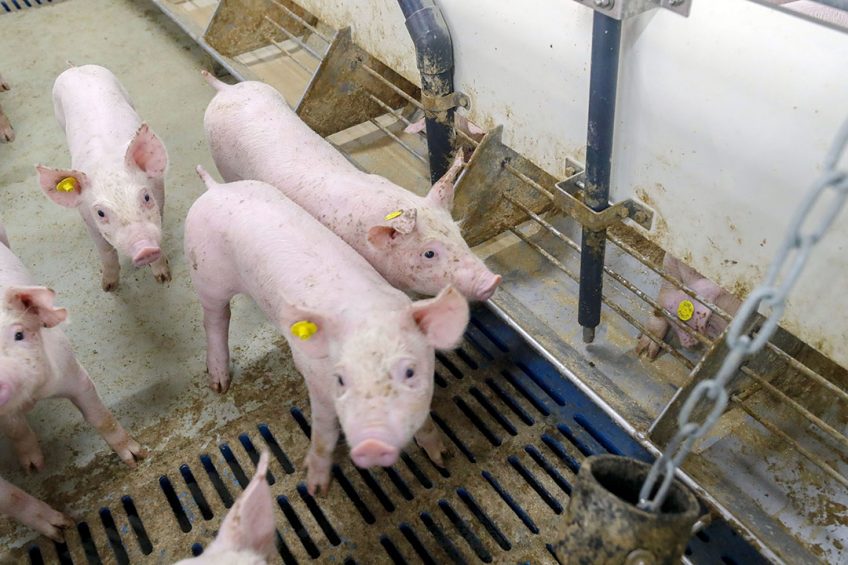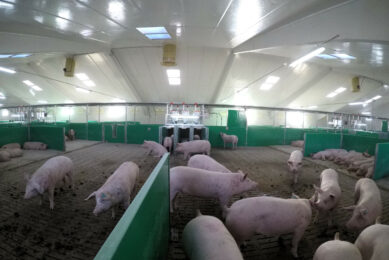How infectious is ASFv in feed exactly?

How infectious is African Swine Fever virus in feed exactly? Recent Spanish research, revolving around liquid porcine plasma, indicates that the minimum infectious dose of African Swine Fever virus on feed may be higher than has been previously been assumed.
The research was carried out at the Animal Health Research Center IRTA-CReSA in Spain, in cooperation with functional proteins producer APC. It was recently published in the peer reviewed online journal PLOS One.
Can liquid porcine plasma infect pigs?
The researchers hoped to determine if commercially collected liquid porcine plasma contaminated with African Swine Fever virus (ASFv), and fed for 14 consecutive days, would infect pigs. To that end, they mixed commercially collected liquid porcine plasma with the serum from an ASFv experimentally infected pig.
Feed as risk factors for spreading ASF
The reason for this study was connected to a series of publications indicating that contaminated feed and porcine origin feed ingredients may be considered risk factors for the spreading ASF. In 2019, a US research team around Dr Scott Dee demonstrated that the virus can survive for 30 days under conditions of a transboundary simulation model.
In addition, another research by Dr Megan Niederwerder at Kansas State University, reported that ASF can be easily transmitted in water and feed. That research mentioned a minimum infectious dose of 104 TCID50 would be sufficient to infect 40% of the pigs.

Track the movement of African Swine Fever
For everything you need to know about ASF, from the latest outbreaks to controls stay up to-date…
In the newly published trials, the researchers used liquid porcine plasma instead of spray-dried porcine plasma, which would normally be used in feed diets. They wanted to avoid the inactivation effect of the spray-drying process on the virus. The use of non-treated liquid plasma would guarantee a high titre of live ASFv.
Trial set-up of study I
In study I, the researchers mixed contaminated liquid plasma in commercial mash nursery feed. In total 2 groups of 10 pigs from a commercial PRRS-free farm received feed for 14 consecutive days, providing the virus to each pig at a concentration of 104.3 TCID50/pig/day.
After 14 days, the animals went to non-inoculated feed. The team then observed the animals for an additional 5 days. In both experiments, the pigs did not become infected with ASFv during the 14-day feeding period or during the subsequent observation period.
Subsequently, the researchers extended the trial to see if the inoculum could be infectious by other routes of administration. On day 20, they inoculated 4 of the positive control pigs by intragastric tube with 50 ml of the liquid porcine plasma spiked with ASFv, and 4 other pigs from this group were injected intramuscularly with 10 ml of the same plasma.
Trial set-up of study II
In study II, only the positive control treatment was tested again with another group of 10 naïve pigs weaned at 4 to 5 weeks of age. The pigs were provided feed mixed with ASFv inoculated liquid porcine plasma at a daily concentration on feed of 105.0 TCID50/pig/day. In a press release by APC, that concentration was described as being a ‘extremely high’. The animals were observed for 9 days after the treatment had ended.
On day 23 of study II, in total 6 pigs received 50 ml of ASFv inoculated liquid porcine plasma by intragastric tube.

Find everything on pig health in the Pig Health Tool
All pigs remained healthy in the feed trial
The research team wrote that all pigs in the trials remained healthy for both the 14-day treatment period and the subsequent observation periods. They did not observe any clinical signs of disease, fever, viraemia or seroconversion. Tissue samples collected from necropsied pigs in study I did not contain ASFv either.
The 4 pigs that got injected intramuscularly after the feed trial in study I were observed to experience high temperatures (over 41.5ºC) 3 days post-inoculation, the research team wrote. In addition, 1 of the 4 pigs challenged with 50 ml through an intragastric tube was experiencing high temperature and exhibiting clinical signs of infection. All tissue samples of pigs receiving the intramuscular injection or intragastric tube were found PCR-positive for ASFv, confirming that the liquid porcine plasma contained infective virus.
As for the 2nd part of study II, also 1 pig tested PCR-positive for ASFv, another 2 had viral genome in their blood.
Minimum infectious dose
The researchers concluded, that in these experiments, unprocessed liquid plasma contaminated with ASFv mixed on commercial feed and fed for 14 consecutive days did not infect pigs. They added: “Results of the present study suggest that the minimum infectious dose (MID) of ASFv on feed is higher than previously reported, at least when the feed is mixed with liquid porcine plasma contaminated with serum from an ASFv infected pig.”
The research paper was authored by Elena Blázquez, Joan Pujols, Joaquim Segalés and Fernando Rodríguez, IRTA-CReSA, Spain; Joe Crenshaw, Carmen Rodríguez, Jesús Ródenas and Javier Polo, APC.












